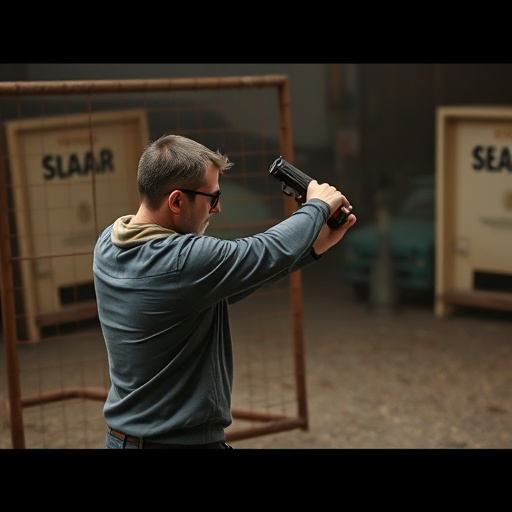Understanding stun gun (electronic control device – ECD) effects on the nervous system, which cause temporary paralysis through high-voltage, low-current pulses, is crucial when selecting tactical holsters. The ideal holster balances protection and quick access, securing the ECD while enabling swift deployment via easy triggers or release mechanisms. Carrying position—like belt, pocket, or ankle holsters—impacts accessibility and discretion, with personal needs dictating the best choice to enhance safety, comfort, and mobility, considering the ECD's nervous system impact.
In today’s diverse tactical landscape, choosing the right stun gun holster is paramount for self-defense professionals. This article delves into the critical aspect of stun gun deployment, exploring how these devices impact the nervous system to gain an edge in high-pressure situations. We’ll navigate various tactical holster options, highlighting their design features and benefits for optimal protection and accessibility, ensuring users can deploy their stun guns effectively when it matters most.
- Understanding Stun Gun Effects on the Nervous System
- Exploring Tactical Holster Options for Optimal Protection and Accessibility
Understanding Stun Gun Effects on the Nervous System

Stun guns, also known as electronic control devices (ECDs), use electric current to disrupt muscle control in the body, effectively incapacitating the target. The primary mechanism of action involves delivering a high-voltage, low-current electrical pulse through two prongs or probes into the nervous system. This pulse interferes with nerve signals, causing muscles to contract uncontrollably and leading to temporary paralysis.
The effects on the nervous system are rapid and intense. The stun gun’s current can cause the target to fall to the ground, experience disorientation, and even lose consciousness momentarily. These effects are designed to subdue an attacker long enough for a person to escape or for law enforcement to intervene. Understanding the precise mechanisms of these stun gun effects on the nervous system is crucial in choosing tactical holster options that ensure easy access during emergencies.
Exploring Tactical Holster Options for Optimal Protection and Accessibility

When considering tactical stun gun holster options, it’s essential to balance protection and accessibility. The stun gun’s primary function is to disrupt an assailant’s nervous system, providing crucial seconds for escape or backup. Therefore, a well-designed holster should not only securely hold the device but also allow for swift, effortless deployment. Look for holsters that offer quick-release mechanisms or easy-to-operate triggers, ensuring you can access your stun gun in moments of need without fumbling or delay.
Moreover, the optimal holster should consider various carrying positions and preferences. Some users opt for belt holsters for ready accessibility, while others prefer pocket or ankle options for discreteness. Each style has its advantages; belt holsters offer quick reach, but they might not be suitable for all body types. On the other hand, concealed options provide a low-profile look, but drawing the stun gun could take slightly longer. Evaluating your personal needs and lifestyle will help guide your selection, ensuring you’re prepared with a tactical holster that enhances your safety without compromising comfort or mobility.
In understanding the profound effects of stun guns on the nervous system, it’s clear that optimal protection and accessibility are paramount. The right tactical holster, designed with these considerations in mind, can significantly enhance safety and effectiveness in various situations. By exploring a range of tactical options, users can ensure they’re prepared for any scenario, leveraging the power of stun guns while prioritizing personal safety and ease of use.
